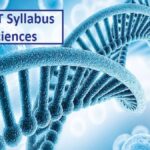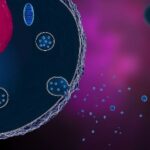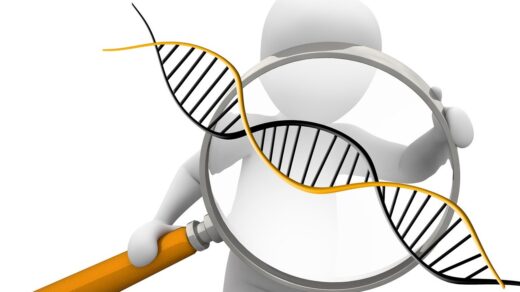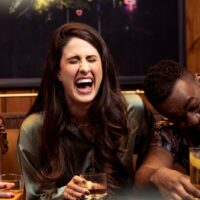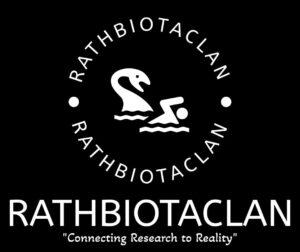Respiration is a vital physiological process that ensures the continuous supply of oxygen (O₂) to body tissues and the removal of carbon dioxide (CO₂), a metabolic waste product. The transport of gases between the lungs and tissues is facilitated by the circulatory system, particularly through the pulmonary circulation. This process involves intricate interactions between the respiratory tubes, alveoli, blood, and hemoglobin, ensuring efficient gas exchange and maintenance of homeostasis. Understanding these mechanisms is crucial for studying respiratory physiology and the function of blood in gas transport.
Blood Flow to and from the Lungs
- Deoxygenated Blood Supply:
Deoxygenated blood is supplied to the lungs by the pulmonary artery. - Oxygenated Blood Return:
Oxygenated blood is received from the lungs by the pulmonary vein. - Capillary Network Around Alveoli:
In the lungs, there is a dense network of capillaries surrounding the alveoli. There is an intimate association between the endothelial blood capillaries and the squamous epithelium of the alveoli. - Gas Exchange:
This close association facilitates efficient O₂ and CO₂ exchange between the blood and alveoli.
Function of Respiratory Tubes
1. Air Conditioning
The respiratory tubes function as an air conditioner because incoming air is warmed, moistened, filtered, and sterilized during its passage through the nose.
2. Heat Radiation
Blood capillaries radiate heat similarly to hot copper pipes. Incoming air passing over them is warmed to body temperature.
3. Moistening Air
Inspiratory air becomes moistened upon contact with mucus secreted by the glandular epithelium.
4. Cleaning and Filtering
- Nasal hairs prevent the entry of dust particles.
- Ciliated epithelium filters fine dust.
- Mucus adheres to impurities due to its adhesive nature, keeping air clean.
5. Sterilization
Mucus is antiseptic and kills bacteria present in incoming air.
Transport of O₂ by the Blood
- Hemoglobin as Oxygen Carrier:
In almost all vertebrates and earthworms, hemoglobin acts as the carrier of oxygen. It consists of a heme (iron-protein part) and a globin (protein part). - Iron Atom in Hemoglobin:
Hemoglobin contains an iron atom in the ferrous (Fe²⁺) state. In the presence of O₂, Fe²⁺ is converted to Fe³⁺. - Globin Structure:
The globin consists of four polypeptides, each attached to a heme group. Each hemoglobin molecule can carry four molecules of O₂, forming oxyhemoglobin. - Reversible Oxygenation:
Formation and dissociation of oxyhemoglobin is a reversible process, allowing O₂ to bind and release as needed.
Chemical Reaction:
Hb+4O2→Hb(O2)4
This reversible oxygenation ensures O₂ remains bound to hemoglobin at its N2 atom until released in tissues.

Causes of Oxyhemoglobin Formation at the Site of the Lungs
1. Normal pH of Blood
The normal pH of blood (7.4) facilitates the formation of oxyhemoglobin.
2. Comparatively Low CO₂ Tension
Lower carbon dioxide (CO₂) tension compared to other parts of the body helps in oxyhemoglobin formation.
3. Lower Temperature
The temperature in the lungs is relatively lower than in other parts of the body, which aids in the formation of oxyhemoglobin.
4. High O₂ Tension
High oxygen (O₂) tension in the lungs promotes the binding of oxygen to hemoglobin, forming oxyhemoglobin.
Causes of Oxyhemoglobin Dissociation in Tissues
1. Slightly Increased Temperature
An increase in temperature in the tissues causes oxyhemoglobin to release oxygen.
2. High CO₂ Tension
High carbon dioxide tension in the tissues leads to the dissociation of oxyhemoglobin.
3. Low O₂ Tension
Lower oxygen tension in the tissues facilitates the release of oxygen from oxyhemoglobin.
Transport of CO₂ in Blood
1. Concentration of CO₂ in Blood
- The concentration of CO₂ in arterial blood is lower than in venous blood.
- In arterial blood, its tension is 40 mm Hg, while in venous blood, it is 46 mm Hg.
2. Transport of CO₂ by Physical Solution
- About 10% of CO₂ (2.7 ml) is transported by being chemically combined with water in the plasma, forming carbonic acid:
CO2+H2O→H2CO3 - Carbonic acid immediately dissociates into H⁺ and HCO₃⁻.
- If all CO₂ were transported this way, blood pH would drop to 3–4.5, which could be fatal.
3. Transport of CO₂ as Chemical Compounds
CO₂ is transported mainly in two forms: carbamino compounds and bicarbonate.
Carbamino Compounds
- About 20% of CO₂ (3.7 ml) is transported by combining with hemoglobin.
- Formation of carbaminohemoglobin is rapid and independent of carbonic anhydrase:
Hb−NH2+CO2→Hb−NH−COOH
Bicarbonate
- Majority of CO₂ (≈70%) is transported as bicarbonate (HCO₃⁻).
- CO₂ is transported via physical solution, carbamino compounds, and bicarbonate.
- Each mechanism is essential for pH balance and preventing toxicity.
Carbon Dioxide Transport in Blood
1. In Erythrocytes (Red Blood Cells)
- CO₂ from plasma enters RBCs.
- CO₂ combines with water to form carbonic acid (H₂CO₃) via carbonic anhydrase.
- Carbonic acid dissociates into H⁺ and HCO₃⁻.
- H⁺ binds to hemoglobin, releasing O₂ and forming carbaminohemoglobin.
- HCO₃⁻ ions are transported to the lungs to be converted back into CO₂.
2. In Blood Plasma
- CO₂ is transported in plasma by three means:
Alkaline Phosphates
- Combine with H₂CO₃ to produce NaH₂PO₄ and HCO₃⁻.
Disodium Hydrogen Phosphate
- Na₂HPO₄ combines with H⁺ to form NaH₂PO₄.
Plasma Proteins (Protein Buffers)
- Plasma proteins react with CO₂ to form sodium bicarbonate (NaHCO₃).
- This buffer system facilitates CO₂ transport in plasma.
The Chloride Shift and Its Role in Gas Transport
1. Chloride Shift Explanation
- Involves movement of Cl⁻ into RBCs and HCO₃⁻ out of RBCs.
- RBC membrane is a “Donnan Equilibrium Membrane”: permeable to Cl⁻ and HCO₃⁻, impermeable to K⁺ and Na⁺.
2. CO₂ Entry and Reaction in RBCs
- CO₂ reacts with water to form H₂CO₃, which dissociates into H⁺ and HCO₃⁻.
- Bicarbonate is exchanged with Cl⁻ to maintain charge balance.
3. Transport in Plasma
- CO₂ and HCO₃⁻ ions are transported through plasma to the lungs.
4. Conversion at the Lungs
- At the lungs, HCO₃⁻ is converted back into CO₂ and H₂O.
- Bicarbonate re-enters RBCs in exchange for Cl⁻, and CO₂ diffuses into alveoli to be expelled.
5. Reversible Reactions
- All reactions in the chloride shift are reversible, ensuring efficient CO₂ transport and release.
Release of CO₂ at the Respiratory Surface
1. Conversion of Compounds in the Lungs
- KHCO₃, Na₂CO₃, Malate, and Hb-NH-COOH are converted into CO₂ in the lungs.
2. Diffusion and Release of CO₂
- CO₂ diffuses into alveoli and is released into the external environment during exhalation.






